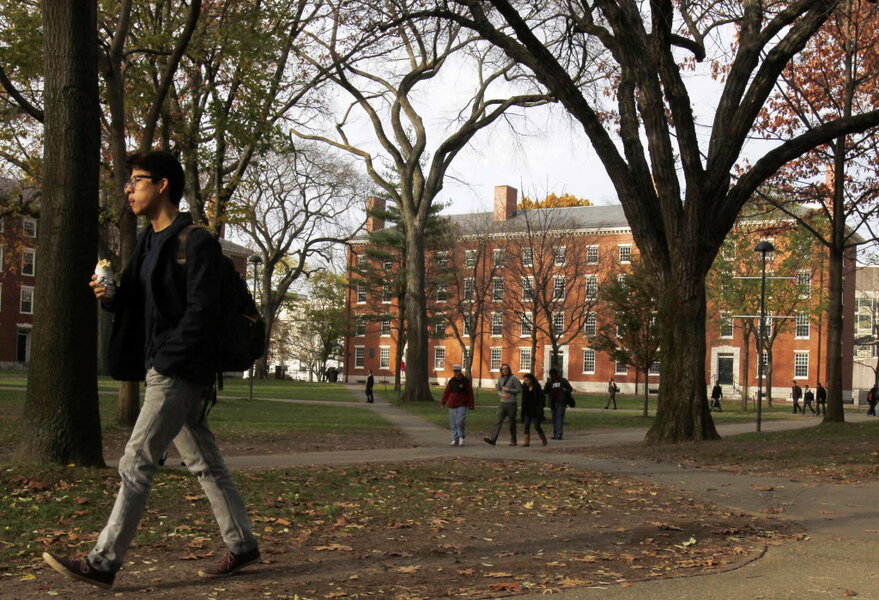The five best mid-sized cities for millennials
Loading...
Want an urban lifestyle without spending a fortune on rent? These cities — and several other mid-size metropolises — are attracting a growing number of 20-somethings who want the benefits of city living without the high rental prices that come with larger urban oases like Chicago, San Francisco, or New York City.
If you're looking for a more affordable version of the Big Apple or the Windy City, why not try these five moderately sized cities?
1. Cambridge, Massachusetts
When Niche — which annually publishes Best Cities lists — released its 2015 ranking of the best U.S. cities for young professionals, Cambridge, in the Boston area, held the top spot.
Niche said that a high 27.7% percent of the Cambridge population is between the ages of 25 to 34 years old, which makes it easier for Millennials to find other like-minded adults. It also gets an A+ from Niche for the ease of its average commute. The unemployment rate in Cambridge is a mere 4.4%, while the city gets A or A+ ratings for its bar, restaurant, and coffee shop offerings.
On the downside, it's not exactly cheap to rent here. Niche reported that the median rent for an apartment in Cambridge was $1,612.
2. Denver, Colorado
Colorado's biggest city is attracting a steady stream of Millennials, too. City Observatory says that the percentage of 25 to 34-year-olds with college degrees increased here by 46.6% from 2000 through 2012.
In a 2015 report, The Urban Land Institute listed Denver as one of the new top destinations for Millennials. The institute cited numbers from ApartmentList.com saying that the median cost of renting a two-bedroom apartment in Denver stood at $1,380 in 2015. That's not a rock-bottom price. But it's far lower than the average two-bedroom rental price in San Francisco ($4,350) or New York City ($3,260).
There's plenty for Millennials to like about Denver. The city's light rail system is a top one, with 48 miles of track. Recently, Denver businesses and cycling fans ran a successful crowdfunding campaign to cover the $155,000 cost of a new protected bike lane that will run along Arapahoe Street downtown. Denver also has the great outdoors. Yes, Denver has all the restaurants, bars, and theaters that you'd expect from a big city. But its location means that Millennials also have easy access to hiking, rock climbing, and skiing.
3. Pittsburgh, Pennsylvania
The Urban Land Institute also cited Pittsburgh as a top mid-size city for Millennials. This is because Pittsburgh has steadily transformed from a city focused on steel and manufacturing to one that is becoming a hub for technology, finance, and healthcare jobs.
Pittsburgh also has plenty of affordable apartments. Walkable neighborhoods are common, and Millennials who live here can find plenty of boutique shops, gourmet restaurants, and trendy bars.
How popular is Pittsburgh today with young adults? The Atlantic recently ran a story with the headline "What Millennials Love About Pittsburgh."
4. San Antonio, Texas
Think San Antonio is home to the Alamo, a nice river walk, and little else? Think again. The Texas city is seeing a boom in aerospace, information technology, biosciences, and advanced manufacturing jobs. And these are the jobs that Millennials increasingly want.
It's little surprise that last year, Forbes reported that San Antonio saw the largest increase in its Millennial population of any U.S. city from 2010 through 2013. According to Forbes, which relied on data from the U.S. Census Bureau, the number of residents from the ages of 20 to 29 increased by 9.2% during this time. As of 2013, San Antonio had 339,540 residents in this age range.
You can join these Millennials for a relatively affordable price. Rent Jungle reported that as of August of this year, the average monthly rent within the San Antonio market stood at $1,035 for a two-bedroom unit and $847 for a one-bedroom apartment.
5. Indianapolis, Indiana
Indianapolis doesn't get a ton of attention from hip young adults. But if you want to spend a smaller percentage of your monthly income on rent — and you'd like to live in the Midwest — you could do worse than moving to Indianapolis. Apartment site RentLingo reports that the median one-bedroom apartment rent in this city consumes just 11.7% of the average household's income. According to RentLingo, this makes Indianapolis the most affordable mid-size city in the country for renters.
Indianapolis isn't just affordable, either. Indiana's capital city boasts several top-ranked attractions that will appeal to Millennials. Lucas Oil Stadium is considered one of the best venues in the National Football League, while the still-newish Bankers Life Fieldhouse, home to the Pacers, ranks as one of the top stadiums in the NBA. For the non-sports fan, Indianapolis offers the Indianapolis Museum of Art, Indiana Repertory Theatre, and the Kurt Vonnegut Memorial Library.
This article first appeared at Wise Bread.







